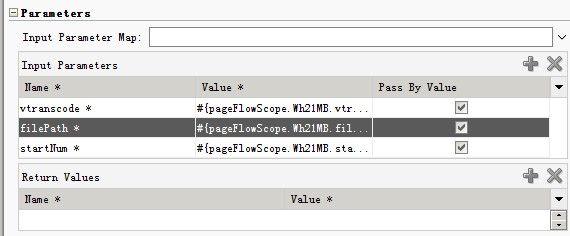- 网络设备带内管理与带外管理:应用场景、区别及优缺点详解
网络小白不怕黑
网络科普网络网络管理网络科普
目录引言什么是带内管理与带外管理?带内管理与带外管理的应用场景带内管理的应用场景带外管理的应用场景带内管理与带外管理的区别数据传输路径管理接口安全性可靠性带内管理与带外管理的优缺点带内管理的优缺点带外管理的优缺点如何选择带内管理与带外管理?总结1.引言在网络管理中,带内管理(In-BandManagement)和带外管理(Out-of-BandManagement)是两种常见的管理方式。它们分别适
- AI推动地理信息系统(GIS)软件的创新发展与应用拓展
酥脆可口
facebook
摘要地理信息系统(GIS)软件作为空间数据处理与分析的核心工具,在城市规划、资源管理、环境监测等领域发挥着关键作用。本文深入探讨人工智能(AI)如何推动GIS软件的创新发展,分析AI技术在提升空间数据分析能力、优化地图制图、拓展应用场景等方面的重要作用,剖析面临的挑战,并对未来发展趋势进行展望,旨在为GIS行业借助AI实现升级提供理论与实践参考。一、引言传统GIS软件主要依赖基于规则的分析方法和人
- python实现一个通讯录,拥有添加联系人,删除联系人,修改联系人,查询联系人,查找通讯录,退出功能
新手懒羊哥
python开发语言
print('-'*25)#输出25个横杠print('-'*25)print("欢迎使用通讯录")print("1.添加联系人")print("2.查看通讯录")print("3.删除联系人")print("4.修改联系人")print("5.查找联系人")print("6.退出")print('-'*25)list1=[0]*10all_user=[]whileTrue:choose=inpu
- STM32单片机中APB1和APB2总线选择
新手懒羊哥
单片机stm32嵌入式硬件
在STM32单片机中,APB1和APB2是两种不同的外设总线,它们的主要区别在于连接的外设类型和时钟频率。以下是使用APB1和APB2的时机:APB1(低速总线):APB1的最高频率一般为36MHz或42MHz。适用于连接低速外设,如I2C、SPI、USART、USB、DAC、I/O端口、定时器等。如果外设的时序要求不是很严格,或者数据传输速率较低,适合使用APB1。APB2(高速总线):APB2
- 基于Python爬虫的商业新闻趋势分析:数据抓取与深度分析实战
Python爬虫项目
2025年爬虫实战项目python爬虫开发语言媒体游戏
在信息化和数字化日益发展的今天,商业新闻成为了行业动向、市场变化、竞争格局等多方面信息的重要来源。对于企业和投资者来说,及时了解商业新闻不仅能帮助做出战略决策,还能洞察市场趋势和风险。在此背景下,商业新闻分析的需求日益增长。通过爬虫技术获取和分析商业新闻数据,不仅可以节省时间和成本,还能高效、精准地进行趋势预测与决策支持。本篇博客将详细介绍如何使用Python爬虫技术抓取商业新闻数据,并进行趋势分
- 基于Python的金融领域AI训练数据抓取实战(完整技术解析)
海拥✘
python金融人工智能
项目背景与需求分析场景描述为训练一个覆盖全球金融市场的多模态大语言模型(LLM),需实时采集以下数据:全球30+主要证券交易所(NYSE、NASDAQ、LSE、TSE等)的上市公司公告企业财报PDF文档及结构化数据社交媒体舆情数据(Twitter、StockTwits)新闻媒体分析(Reuters、Bloomberg)技术挑战地理封锁:部分交易所(如日本TSE)仅允许本国IP访问历史数据动态反爬:
- Spring中的循环依赖问题是什么?
上官美丽
javaidejavaspringboot
在使用Spring框架进行开发时,可能会遇到一个比较棘手的问题,那就是循环依赖。说到循环依赖,很多人可能会感到有些困惑,难道这个问题真的有那么复杂吗?其实,理解循环依赖并不是很难。我们可以从Spring的依赖注入机制入手,看看循环依赖是如何产生的,以及如何解决这个问题,让项目运行得更加顺利。**什么是循环依赖呢?**简单来说,循环依赖就是在两个或多个Bean之间相互引用的情况。举个例子,假设有两个
- 【AI论文】ReCamMaster:基于单视频的相机控制式生成渲染
东临碣石82
人工智能数码相机计算机视觉
摘要:相机控制在基于文本或图像条件的视频生成任务中已得到积极研究。然而,尽管改变给定视频的相机轨迹在视频创作领域具有重要意义,但这一领域的研究仍显不足。由于需要保持多帧外观和动态同步的额外约束,这一任务颇具挑战性。为解决这一问题,我们提出了ReCamMaster,这是一个相机控制的生成式视频重渲染框架,能够在新的相机轨迹下重现输入视频中的动态场景。其核心创新在于通过一种简单而强大的视频条件机制,利
- 解决 开发FFMPEG视频播放器右侧白色线问题
吃面不喝汤66
OBS二次开发ffmpeg音视频
在开发基于Qt和FFmpeg的视频播放器时,我遇到一个常见但令人困惑的问题:在使用VideoWidget(继承自QOpenGLWidget)播放某些视频时,窗口右侧会出现一条白色线。这不仅影响视觉效果,还可能暴露潜在的渲染或缓冲区问题。本文将详细分析这一现象的成因,并提供经过验证的解决方案。问题现象在使用自定义的VideoDecoder和VideoWidget类播放视频时,大多数视频都能正常显示,
- SvelteKit 最新中文文档教程(7)—— 构建和部署
前言Svelte,一个语法简洁、入门容易,面向未来的前端框架。从Svelte诞生之初,就备受开发者的喜爱,根据统计,从2019年到2024年,连续6年一直是开发者最感兴趣的前端框架No.1:Svelte以其独特的编译时优化机制著称,具有轻量级、高性能、易上手等特性,非常适合构建轻量级Web项目。为了帮助大家学习Svelte,我同时搭建了Svelte最新的中文文档站点。如果需要进阶学习,也可以入手我
- C++并发编程有什么最佳实践?
c++
在C++并发编程中,遵循最佳实践可以显著提升代码的效率、可维护性和可扩展性。以下是一些关键的最佳实践:使用线程池管理线程线程池可以预先创建一组线程,并在需要时将任务分配给这些线程。这种方式减少了创建和销毁线程的开销,提高了程序性能。例如:cpp复制autopool=std::make_shared(std::thread::hardware_concurrency());pool->push(st
- QT中日志的使用案例 || 自动创建、管理、保存QT日志数据
长安第一美人
qt开发语言c++嵌入式硬件
目录1.quiwidget.cpp2.widget.cpp3.widget.h4.在需要记录日志的地方直接将信息插入即可1.释放`m_fileLog`和`m_textStream`1.1为什么要关闭和删除`m_fileLog`和`m_textStream`?1.2如果不这样做会有什么坏处?3.总结4.参考文章需求分析:想实现在qt代码中对软件运行过程中容易出现的问题进行记录,将电量异常分析日志与平
- php 高性能,高并发,有哪些框架,扩展,推荐一下,或者技术的实现有哪些
行思理
运维LNMPLinuxphp开发语言
以下是针对PHP高性能、高并发场景的框架、扩展及技术实现推荐,结合最新技术趋势和行业实践进行总结:一、高性能框架推荐1.C扩展类框架YAF(YetAnotherFramework)特点:由C语言编写,直接嵌入PHP内核,仅提供核心MVC功能,执行效率极高(RPS可达3000+),适合API网关、秒杀系统等场景213。适用场景:对性能要求极高但功能需求简单的项目,如百度、微博部分业务曾采用其修改版。
- 甘特图:项目经理的时空魔方,解锁高效管理的秘密
在1917年,机械工程师亨利·甘特发明了一张看似简单的条形图,却彻底改变了人类管理复杂工程的方式。如今,这张图表在波音787客机研发、北京冬奥会场馆建设中依然发挥着关键作用。甘特图不仅是进度条的可视化,更是项目管理的时空坐标系——它能将抽象的时间、资源和任务转化为具象的作战地图,让项目经理如同掌握时空魔方般操控项目进程。一、甘特图的四大降维打击优势时空折叠术:三维信息二维呈现时间维度:在特斯拉上海
- 项目经理在推进项目时,职能线经理不配合怎么办?
在矩阵型组织中,项目经理与职能线经理的博弈如同“双人舞”——前者关注项目目标,后者专注职能效率,两者的权力交叉地带往往成为冲突高发区。PMI报告显示,68%的项目延期与资源协调受阻直接相关,而职能经理的配合度是资源获取的核心变量。本文将从权力结构剖析、实战应对策略到长效机制建设,提供一套破解职能壁垒的系统化方案。一、职能博弈的三大底层逻辑资源争夺战职能经理的KPI聚焦部门资源利用率,与项目临时抽调
- 项目经理的验收突围战:从风险预判到价值交付的破局之道
在软件项目交付失败的统计中,近40%的问题集中爆发在验收环节。当某智慧城市项目在验收阶段遭遇23个功能点争议时,项目经理发现合同中的验收标准竟写着"系统运行稳定"这样的模糊表述——这个真实案例折射出验收管理的复杂性。项目经理需要构建从需求源头到价值交付的全周期验收防御体系。一、验收危机的三大引爆点与拆解策略需求迷雾:概念共识的断层某医疗AI项目开发时,客户口中的"智能分诊"被工程师理解为规则引擎,
- UniApp 从Vue2升级为Vue3需要注意哪些方面
行思理
App开发uni-appvue.jsjavascriptVue3Vue2
Vue官方已经发布了Vue3,Vue2不再维护,也在建议大家都迁移到Vue3,所以Vue2终会被淘汰。那么UniApp从Vue2升级为Vue3需要注意哪些方面:1、main.js下面请看创建应用实例Vue2与Vue3的不同:Vue2的写法://之前-Vue2importVuefrom'vue'importAppfrom'./App'Vue.config.productionTip=false//v
- 客户总是提出不合理的需求,如何破局?
在项目管理中,“客户提出不合理需求”是项目经理最常遇到的挑战之一。这些需求可能超出合同范围、违背技术可行性、突破预算或时间限制,甚至逻辑上自相矛盾。但真正的困境往往不在于需求本身是否合理,而在于如何平衡客户期望与项目边界,将对抗转化为合作。本文将从需求本质剖析、结构化应对策略到高阶破局思维,提供一套系统化的解决方案。一、需求“不合理”的本质诊断表象与根源的错位冰山模型:客户表面需求(如“界面要更酷
- dfs(二十二)78. 子集
曾几何时`
#DFS深度优先算法数据结构
78.子集给你一个整数数组nums,数组中的元素互不相同。返回该数组所有可能的(幂集)。解集不能包含重复的子集。你可以按任意顺序返回解集。示例1:输入:nums=[1,2,3]输出:[[],[1],[2],[1,2],[3],[1,3],[2,3],[1,2,3]]示例2:输入:nums=[0]输出:[[],[0]]提示:1>res;vectorpath;vector>subsets(vector
- 【算法设计-链栈和链队列】链栈和链队列的实现
baimeng5720
算法设计
1.链队列。利用带有头结点的单链表来实现链队列,插入和删除的复杂度都为o(1)代码:#include#includetypedefstructQnode{intdata;Qnode*next;}Qnode;typedefstructLinkQueue{Qnode*front;Qnode*rear;}LinkQueue;voidinitialize(LinkQueue*LinkQueue){Link
- 链栈与链队列
aaaaaries
单链表队列链表
链栈链栈的定义栈的链式存储结构链栈:即用链表实现栈存储结构栈顶:允许插入和删除的一端(top)栈底:不同于栈顶的另外一端(bottom)空栈:不含任何元素的栈链栈实际上就是一个只能采用头插法插入或删除数据的链表//链栈表示structlink{intdata;structlink*next;};//链栈初始化voidinitstack(structlink*top){top=(structlink
- 【数据结构】 -- 链表的入栈弹栈
王峰~
C语言数据结构
#include#include//链表中的节点结构typedefstructlineStack{intdata;structlineStack*next;}lineStack;//入栈操作;//stack为当前的链栈,a表示入栈元素lineStack*push(lineStack*stack,inta){//创建存储新元素的节点lineStack*line=(lineStack*)malloc(
- 【sglang】sglang出现如下报错sglang/srt/server.py“, line 631, in _wait_and_warmup assert res.status_code
深度求索者
python
sglang部署服务过程中如果出现如下报错:Initializationfailed.warmuperror:Traceback(mostrecentcalllast):[2025-03-1110:17:39]Initializationfailed.warmuperror:Traceback(mostrecentcalllast):File"/miniconda/envs/SGLang/lib/
- 华纳云:BenchSEE测试工具怎么用?
测试
BenchSEE测试工具的使用方法可以按照以下步骤进行:BenchSEE简介:BenchSEE是中国标准化研究院开发的一款服务器产品能效测试基准软件。它支持多种服务器类型和硬件平台,并兼容主流操作系统。准备工作:确保测试系统包括控制端(可以是PC或服务器,需联网并支持谷歌浏览器)、被测服务器、温度计(可选择模拟模式)、功耗仪(可选择模拟模式)。若要生成可信报告,则必须链接功耗仪和温度计。注意功耗仪
- springboot独立邮件服务器,后端篇-SpringBoot–自定义域名发送邮件
洋莞成
前言最近的一个小项目用到了邮件发送的功能,由于自己实现一套SMTP比较复杂,于是借助第三方如QQ邮箱或网易邮箱或Gmail等邮件系统实现此功能,在开发过程中我使用了网易邮箱,并申请了免费的网易企业邮箱实现自定义域名发送邮件。邮件协议SMTPSMTP(SimpleMailTransferProtocol)即简单邮件传输协议是一个在互联网上传输电子邮件的标准。POPPOP(PostOfficeProt
- 用 Python 实现每秒百万级请求
weixin_33719619
python网络后端
本文讲的是用Python实现每秒百万级请求,用Python可以每秒发出百万个请求吗?这个问题终于有了肯定的回答。许多公司抛弃Python拥抱其他语言就为了提高性能节约服务器成本。但是没必要啊。Python也可以胜任。Python社区近来针对性能做了很多优化。CPython3.6新的字典实现方式提升了解释器的总体性能。得益于更快的调用约定和字典查询缓存,CPython3.7会更快。对于计算密集型工作
- springboot日志可视化_使用 SpringBoot Admin 监控你的 SpringBoot 程序
weixin_39622568
springboot日志可视化
1.SpringBootAdmin是什么SpringBootAdmin是由codecentric组织开发的开源项目,使用SpringBootAdmin可以管理和监控你的SpringBoot项目。它分为客户端和服务端两部分,客户端添加到你的SpringBoot应用增加暴漏相关信息的HTTP接口,然后注册到SpringBootAdmin服务端,这一步骤可以直接向服务端注册,也可以通过Eureka或者C
- springboot+kafka+邮件发送(最佳实践)
weixin_30347335
大数据java数据库
导读集成spring-kafka,生产者生产邮件message,消费者负责发送引入线程池,多线程发送消息多邮件服务器配置定时任务生产消息;计划邮件发送实现过程导入依赖1.85.1.382.1.51.3.22.8.23.4org.springframework.bootspring-boot-starterorg.springframework.bootspring-boot-starter-tes
- 分布式系统中的负载均衡
樽酒ﻬق
架构设计负载均衡网络运维
目录分布式系统中的负载均衡引言1.什么是负载均衡?1.1负载均衡的目标2.负载均衡的类型2.1网络负载均衡(NetworkLoadBalancing)2.2应用负载均衡(ApplicationLoadBalancing)2.3全局负载均衡(GlobalLoadBalancing)2.4计算负载均衡(ComputeLoadBalancing)3.负载均衡算法3.1轮询(RoundRobin)3.2加
- Multi-view graph convolutional networks with attention mechanism
小源er
图论和图神经网络机器学习机器学习深度学习人工智能
摘要传统的图卷积网络关注于如何高效的探索不同阶跳数(hops)的邻居节点的信息。但是目前的基于GCN的图网络模型都是构建在固定邻接矩阵上的即实际图的一个拓扑视角。当数据包含噪声或者图不完备时,这种方式会限制模型的表达能力。由于数据的测量或者收集会不可避免的会出现错误,因此基于固定结构的图模型表达能力是不充分的。本文提出了基于注意力机制的多视图图卷积网络,将拓扑结构的多个视图和基于注意力的特征聚合策
- LeetCode[Math] - #66 Plus One
Cwind
javaLeetCode题解AlgorithmMath
原题链接:#66 Plus One
要求:
给定一个用数字数组表示的非负整数,如num1 = {1, 2, 3, 9}, num2 = {9, 9}等,给这个数加上1。
注意:
1. 数字的较高位存在数组的头上,即num1表示数字1239
2. 每一位(数组中的每个元素)的取值范围为0~9
难度:简单
分析:
题目比较简单,只须从数组
- JQuery中$.ajax()方法参数详解
AILIKES
JavaScriptjsonpjqueryAjaxjson
url: 要求为String类型的参数,(默认为当前页地址)发送请求的地址。
type: 要求为String类型的参数,请求方式(post或get)默认为get。注意其他http请求方法,例如put和 delete也可以使用,但仅部分浏览器支持。
timeout: 要求为Number类型的参数,设置请求超时时间(毫秒)。此设置将覆盖$.ajaxSetup()方法的全局
- JConsole & JVisualVM远程监视Webphere服务器JVM
Kai_Ge
JVisualVMJConsoleWebphere
JConsole是JDK里自带的一个工具,可以监测Java程序运行时所有对象的申请、释放等动作,将内存管理的所有信息进行统计、分析、可视化。我们可以根据这些信息判断程序是否有内存泄漏问题。
使用JConsole工具来分析WAS的JVM问题,需要进行相关的配置。
首先我们看WAS服务器端的配置.
1、登录was控制台https://10.4.119.18
- 自定义annotation
120153216
annotation
Java annotation 自定义注释@interface的用法 一、什么是注释
说起注释,得先提一提什么是元数据(metadata)。所谓元数据就是数据的数据。也就是说,元数据是描述数据的。就象数据表中的字段一样,每个字段描述了这个字段下的数据的含义。而J2SE5.0中提供的注释就是java源代码的元数据,也就是说注释是描述java源
- CentOS 5/6.X 使用 EPEL YUM源
2002wmj
centos
CentOS 6.X 安装使用EPEL YUM源1. 查看操作系统版本[root@node1 ~]# uname -a Linux node1.test.com 2.6.32-358.el6.x86_64 #1 SMP Fri Feb 22 00:31:26 UTC 2013 x86_64 x86_64 x86_64 GNU/Linux [root@node1 ~]#
- 在SQLSERVER中查找缺失和无用的索引SQL
357029540
SQL Server
--缺失的索引
SELECT avg_total_user_cost * avg_user_impact * ( user_scans + user_seeks ) AS PossibleImprovement ,
last_user_seek ,
- Spring3 MVC 笔记(二) —json+rest优化
7454103
Spring3 MVC
接上次的 spring mvc 注解的一些详细信息!
其实也是一些个人的学习笔记 呵呵!
- 替换“\”的时候报错Unexpected internal error near index 1 \ ^
adminjun
java“\替换”
发现还是有些东西没有刻子脑子里,,过段时间就没什么概念了,所以贴出来...以免再忘...
在拆分字符串时遇到通过 \ 来拆分,可是用所以想通过转义 \\ 来拆分的时候会报异常
public class Main {
/*
- POJ 1035 Spell checker(哈希表)
aijuans
暴力求解--哈希表
/*
题意:输入字典,然后输入单词,判断字典中是否出现过该单词,或者是否进行删除、添加、替换操作,如果是,则输出对应的字典中的单词
要求按照输入时候的排名输出
题解:建立两个哈希表。一个存储字典和输入字典中单词的排名,一个进行最后输出的判重
*/
#include <iostream>
//#define
using namespace std;
const int HASH =
- 通过原型实现javascript Array的去重、最大值和最小值
ayaoxinchao
JavaScriptarrayprototype
用原型函数(prototype)可以定义一些很方便的自定义函数,实现各种自定义功能。本次主要是实现了Array的去重、获取最大值和最小值。
实现代码如下:
<script type="text/javascript">
Array.prototype.unique = function() {
var a = {};
var le
- UIWebView实现https双向认证请求
bewithme
UIWebViewhttpsObjective-C
什么是HTTPS双向认证我已在先前的博文 ASIHTTPRequest实现https双向认证请求
中有讲述,不理解的读者可以先复习一下。本文是用UIWebView来实现对需要客户端证书验证的服务请求,网上有些文章中有涉及到此内容,但都只言片语,没有讲完全,更没有完整的代码,让人困扰不已。但是此知
- NoSQL数据库之Redis数据库管理(Redis高级应用之事务处理、持久化操作、pub_sub、虚拟内存)
bijian1013
redis数据库NoSQL
3.事务处理
Redis对事务的支持目前不比较简单。Redis只能保证一个client发起的事务中的命令可以连续的执行,而中间不会插入其他client的命令。当一个client在一个连接中发出multi命令时,这个连接会进入一个事务上下文,该连接后续的命令不会立即执行,而是先放到一个队列中,当执行exec命令时,redis会顺序的执行队列中
- 各数据库分页sql备忘
bingyingao
oraclesql分页
ORACLE
下面这个效率很低
SELECT * FROM ( SELECT A.*, ROWNUM RN FROM (SELECT * FROM IPAY_RCD_FS_RETURN order by id desc) A ) WHERE RN <20;
下面这个效率很高
SELECT A.*, ROWNUM RN FROM (SELECT * FROM IPAY_RCD_
- 【Scala七】Scala核心一:函数
bit1129
scala
1. 如果函数体只有一行代码,则可以不用写{},比如
def print(x: Int) = println(x)
一行上的多条语句用分号隔开,则只有第一句属于方法体,例如
def printWithValue(x: Int) : String= println(x); "ABC"
上面的代码报错,因为,printWithValue的方法
- 了解GHC的factorial编译过程
bookjovi
haskell
GHC相对其他主流语言的编译器或解释器还是比较复杂的,一部分原因是haskell本身的设计就不易于实现compiler,如lazy特性,static typed,类型推导等。
关于GHC的内部实现有篇文章说的挺好,这里,文中在RTS一节中详细说了haskell的concurrent实现,里面提到了green thread,如果熟悉Go语言的话就会发现,ghc的concurrent实现和Go有点类
- Java-Collections Framework学习与总结-LinkedHashMap
BrokenDreams
LinkedHashMap
前面总结了java.util.HashMap,了解了其内部由散列表实现,每个桶内是一个单向链表。那有没有双向链表的实现呢?双向链表的实现会具备什么特性呢?来看一下HashMap的一个子类——java.util.LinkedHashMap。
- 读《研磨设计模式》-代码笔记-抽象工厂模式-Abstract Factory
bylijinnan
abstract
声明: 本文只为方便我个人查阅和理解,详细的分析以及源代码请移步 原作者的博客http://chjavach.iteye.com/
package design.pattern;
/*
* Abstract Factory Pattern
* 抽象工厂模式的目的是:
* 通过在抽象工厂里面定义一组产品接口,方便地切换“产品簇”
* 这些接口是相关或者相依赖的
- 压暗面部高光
cherishLC
PS
方法一、压暗高光&重新着色
当皮肤很油又使用闪光灯时,很容易在面部形成高光区域。
下面讲一下我今天处理高光区域的心得:
皮肤可以分为纹理和色彩两个属性。其中纹理主要由亮度通道(Lab模式的L通道)决定,色彩则由a、b通道确定。
处理思路为在保持高光区域纹理的情况下,对高光区域着色。具体步骤为:降低高光区域的整体的亮度,再进行着色。
如果想简化步骤,可以只进行着色(参看下面的步骤1
- Java VisualVM监控远程JVM
crabdave
visualvm
Java VisualVM监控远程JVM
JDK1.6开始自带的VisualVM就是不错的监控工具.
这个工具就在JAVA_HOME\bin\目录下的jvisualvm.exe, 双击这个文件就能看到界面
通过JMX连接远程机器, 需要经过下面的配置:
1. 修改远程机器JDK配置文件 (我这里远程机器是linux).
- Saiku去掉登录模块
daizj
saiku登录olapBI
1、修改applicationContext-saiku-webapp.xml
<security:intercept-url pattern="/rest/**" access="IS_AUTHENTICATED_ANONYMOUSLY" />
<security:intercept-url pattern=&qu
- 浅析 Flex中的Focus
dsjt
htmlFlexFlash
关键字:focus、 setFocus、 IFocusManager、KeyboardEvent
焦点、设置焦点、获得焦点、键盘事件
一、无焦点的困扰——组件监听不到键盘事件
原因:只有获得焦点的组件(确切说是InteractiveObject)才能监听到键盘事件的目标阶段;键盘事件(flash.events.KeyboardEvent)参与冒泡阶段,所以焦点组件的父项(以及它爸
- Yii全局函数使用
dcj3sjt126com
yii
由于YII致力于完美的整合第三方库,它并没有定义任何全局函数。yii中的每一个应用都需要全类别和对象范围。例如,Yii::app()->user;Yii::app()->params['name'];等等。我们可以自行设定全局函数,使得代码看起来更加简洁易用。(原文地址)
我们可以保存在globals.php在protected目录下。然后,在入口脚本index.php的,我们包括在
- 设计模式之单例模式二(解决无序写入的问题)
come_for_dream
单例模式volatile乱序执行双重检验锁
在上篇文章中我们使用了双重检验锁的方式避免懒汉式单例模式下由于多线程造成的实例被多次创建的问题,但是因为由于JVM为了使得处理器内部的运算单元能充分利用,处理器可能会对输入代码进行乱序执行(Out Of Order Execute)优化,处理器会在计算之后将乱序执行的结果进行重组,保证该
- 程序员从初级到高级的蜕变
gcq511120594
框架工作PHPandroidhtml5
软件开发是一个奇怪的行业,市场远远供不应求。这是一个已经存在多年的问题,而且随着时间的流逝,愈演愈烈。
我们严重缺乏能够满足需求的人才。这个行业相当年轻。大多数软件项目是失败的。几乎所有的项目都会超出预算。我们解决问题的最佳指导方针可以归结为——“用一些通用方法去解决问题,当然这些方法常常不管用,于是,唯一能做的就是不断地尝试,逐个看看是否奏效”。
现在我们把淫浸代码时间超过3年的开发人员称为
- Reverse Linked List
hcx2013
list
Reverse a singly linked list.
/**
* Definition for singly-linked list.
* public class ListNode {
* int val;
* ListNode next;
* ListNode(int x) { val = x; }
* }
*/
p
- Spring4.1新特性——数据库集成测试
jinnianshilongnian
spring 4.1
目录
Spring4.1新特性——综述
Spring4.1新特性——Spring核心部分及其他
Spring4.1新特性——Spring缓存框架增强
Spring4.1新特性——异步调用和事件机制的异常处理
Spring4.1新特性——数据库集成测试脚本初始化
Spring4.1新特性——Spring MVC增强
Spring4.1新特性——页面自动化测试框架Spring MVC T
- C# Ajax上传图片同时生成微缩图(附Demo)
liyonghui160com
1.Ajax无刷新上传图片,详情请阅我的这篇文章。(jquery + c# ashx)
2.C#位图处理 System.Drawing。
3.最新demo支持IE7,IE8,Fir
- Java list三种遍历方法性能比较
pda158
java
从c/c++语言转向java开发,学习java语言list遍历的三种方法,顺便测试各种遍历方法的性能,测试方法为在ArrayList中插入1千万条记录,然后遍历ArrayList,发现了一个奇怪的现象,测试代码例如以下:
package com.hisense.tiger.list;
import java.util.ArrayList;
import java.util.Iterator;
- 300个涵盖IT各方面的免费资源(上)——商业与市场篇
shoothao
seo商业与市场IT资源免费资源
A.网站模板+logo+服务器主机+发票生成
HTML5 UP:响应式的HTML5和CSS3网站模板。
Bootswatch:免费的Bootstrap主题。
Templated:收集了845个免费的CSS和HTML5网站模板。
Wordpress.org|Wordpress.com:可免费创建你的新网站。
Strikingly:关注领域中免费无限的移动优
- localStorage、sessionStorage
uule
localStorage
W3School 例子
HTML5 提供了两种在客户端存储数据的新方法:
localStorage - 没有时间限制的数据存储
sessionStorage - 针对一个 session 的数据存储
之前,这些都是由 cookie 完成的。但是 cookie 不适合大量数据的存储,因为它们由每个对服务器的请求来传递,这使得 cookie 速度很慢而且效率也不

